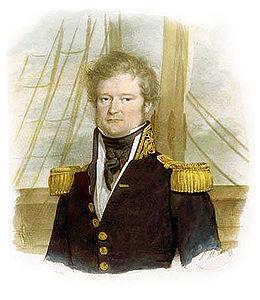Sale on canvas prints! Use code ABCXYZ at checkout for a special discount!

In August 1822 d’Urville sailed on the ship Coquille from Toulon with the objective of collecting as much scientific and strategic information as possible on the area to which it was dispatched. Duperrey (Who first sailed with Freycinet) was named Commander of the expedition because he was four years older than Dumont. On the Coquille, Dumont tried to reconcile his responsibilities as second in command with his need to carry out scientific work. He was in charge of carrying out research in the fields of the botany and entomology. The Coquille brought back to France specimens of more than 3,000 species of plants, 400 of which were previously unknown, enriching moreover the Muséum national d'histoire naturelle in Paris with more than 1,200 specimens of insects, covering 1,100 insect species (including 300 previously unknown species).
Two months after Dumont returned on the Coquille, he presented to the Navy Ministry a plan for a new expedition, which he hoped to command. The proposal was accepted and the Coquille, renamed the Astrolabe in honour of the ship of La Pérouse, sailed from Toulon at the beginning of 1826 towards the Pacific Ocean, for a circumnavigation of the world that was destined to last nearly three years.
The new Astrolabe skirted the coast of southern Australia, carried out new relief maps of the South Island of New Zealand, reached the archipelagos of Tonga and Fiji, executed the first relief maps of the Loyalty Islands (part of French New Caledonia) and explored the coasts of New Guinea. He identified the site of La Pérouse’s shipwreck in Vanikoro (one of the Santa Cruz Islands, part of the archipelago of the Solomon Islands) and collected numerous remains of his boats. The voyage continued with the mapping of part of the Caroline Islands and the Moluccas(Guam and Micronesia). The Astrolabe returned to Marseille during the early months of 1829 with an impressive load of hydrographical papers and collections of zoological, botanical and mineralogical reports, which were destined to strongly influence the scientific analysis of those regions. Following this expedition, he invented the terms Malaisia, Micronesia and Melanesia, distinguishing these Pacific cultures and island groups from Polynesia.
Dumont d’Urville passed a short period with his family before returning to Paris, where he was promoted to captain and he was put in charge of writing the report of his travels. The five volumes were published at the expense of the French government between 1832 and 1834 images from these publications and the folio are offered here.